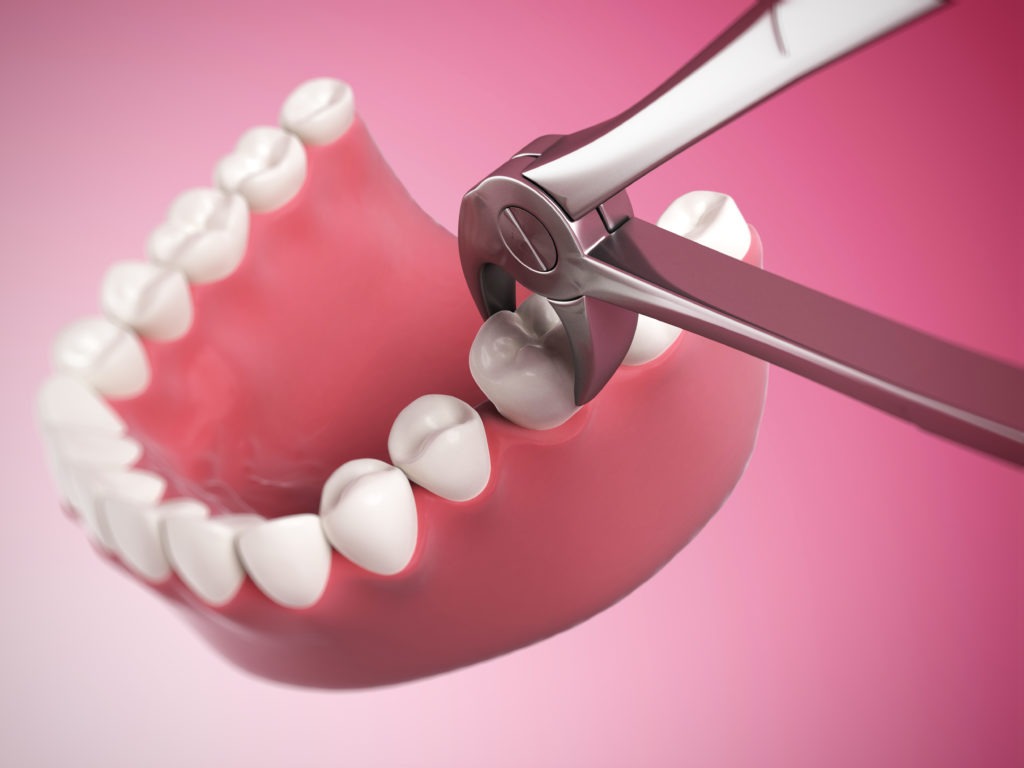Depending on the circumstances, a tooth extraction may be removed by your regular dentist or an oral surgeon. A tooth extraction, also known as exodontia, is the removal of your tooth from its socket in the bone. An extraction is a surgical procedure and is performed for the following reasons:
- Wisdom tooth pain
- Abscessed tooth
- Tooth decay
- A broken tooth
- Gum disease
- Removal of overcrowded teeth
Preparing for a Tooth Extraction
It’s important that your dentist has an understanding of your complete medical history by knowing what medications or supplements you are taking, underlying medical conditions such as heart problems, joint replacements, or if your immune system is compromised. If you have a risk of infection, your dentist may want to prescribe a course of antibiotics prior to your procedure.
The Tooth Extraction Procedure
Depending on how complex the extraction is and your age, condition, and comfort levels needed, the procedure may be performed with either local or general anesthesia. There are two types of extractions:
Simple Extraction
When your tooth is completely visible in your mouth and the extraction is able to be performed with local anesthesia. Your dentist will use forceps to remove your tooth and use a sterile gauze pad over the area to stop any bleeding that may occur.

Surgical Extraction
If your tooth is impacted, which is common with wisdom teeth, or broken at the gum line, or not fully descended into your mouth, your dentist will need to perform a more complicated procedure by cutting away gum or tissue. These types of extractions require general anesthesia, especially if there is more than one tooth involved.
Recovery After a Tooth Extraction
You may experience some slight bleeding for a day or two after the procedure but most patients recover from a simple tooth extraction quickly. Recovery after a surgical extraction may take a little bit longer. Aftercare can include the following:
- Take regular anti-inflammatory medication
- Avoid mouthwash, mouth rinse, hot food or drink for the first 24 hours
- Avoid strenuous activity for the first 24 hours
- After 24 hours, rinse your mouth gently with warm salt water. Prepare a rinse of one teaspoon of salt in a glass of warm water 3-4 times per day, after meals. Be careful not to dislodge any blood clot in the tooth socket.
- Use a cold compress to ease any swelling
- Sleep propped up with an extra pillow
- Eat a well-balanced, soft diet for a few days
- Use a child’s toothbrush to brush your teeth
- Complete the course of antibiotics if they have been prescribed
- Avoid smoking so you can heal faster
If you develop a temperature or pain or swelling worsens, please contact your dentist. Over time your mouth will slowly fill in the area where your tooth was.